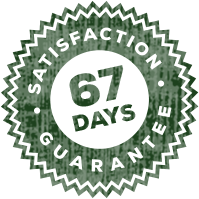When it comes to optimizing your health and vitality as you age, no supplement or intervention works in isolation. The most successful approach to maintaining energy, strength, and overall wellness involves a comprehensive strategy that addresses multiple aspects of your lifestyle. Research consistently shows that combining targeted supplementation with proven lifestyle modifications produces far superior results than either approach alone. Let’s explore the evidence-based lifestyle strategies that can help you maximize your results and reclaim the vitality you deserve.
The Foundation: Quality Sleep
Sleep is perhaps the most underrated yet crucial factor in maintaining optimal health and hormone balance. During deep sleep, your body releases the majority of its growth hormone, repairs tissues, consolidates memories, and clears metabolic waste from the brain. A landmark study published in the Journal of the American Medical Association found that men who slept less than five hours per night had significantly lower testosterone levels compared to those who slept seven to eight hours (Leproult & Van Cauter, 2011).
To maximize your sleep quality, establish a consistent sleep schedule by going to bed and waking up at the same time every day, even on weekends. Create a cool, dark sleeping environment with temperatures between 60-67°F (15-19°C), which research shows is optimal for sleep. Limit screen time for at least one hour before bed, as the blue light from devices suppresses melatonin production. A study in Proceedings of the National Academy of Sciences demonstrated that evening use of light-emitting devices significantly disrupted sleep patterns and reduced next-day alertness (Chang et al., 2015).
Strategic Exercise: The Hormone Optimizer
Exercise is one of the most powerful natural tools for optimizing hormone production and overall health. However, not all exercise is created equal when it comes to maximizing results. Research published in Sports Medicine indicates that high-intensity interval training and resistance training are particularly effective at stimulating growth hormone release (Godfrey et al., 2003).
Aim for resistance training at least three times per week, focusing on compound movements like squats, deadlifts, and presses that engage multiple muscle groups simultaneously. These exercises create a greater metabolic demand and hormone response than isolation exercises. A study in the European Journal of Applied Physiology found that heavy resistance exercise significantly increased growth hormone levels for up to 24 hours post-workout (Kraemer et al., 1990).
Incorporate high-intensity interval training on alternate days, which involves short bursts of intense activity followed by recovery periods. Research shows that HIIT can boost growth hormone levels by up to 450% during the 24 hours following your workout (Boutcher, 2011). However, balance is crucial—overtraining can have the opposite effect by elevating cortisol and suppressing beneficial hormones. Ensure you’re getting adequate recovery time between intense sessions.
Nutritional Strategies for Optimal Results
Your diet plays a fundamental role in supporting hormone production and overall vitality. Protein intake is particularly crucial, as amino acids serve as the building blocks for hormone synthesis and muscle maintenance. Research in the American Journal of Clinical Nutrition suggests that adults should aim for 1.2-1.6 grams of protein per kilogram of body weight daily, especially as they age (Bauer et al., 2013).
Focus on incorporating healthy fats into your diet, particularly omega-3 fatty acids from sources like wild-caught fish, walnuts, and flaxseeds. A study published in Biochemical Society Transactions found that dietary fats are essential for optimal hormone production, as hormones are synthesized from cholesterol and fatty acid precursors (Wang et al., 2006).
Intermittent fasting has emerged as a powerful tool for optimizing hormone levels. Research in the American Journal of Physiology demonstrated that short-term fasting can increase growth hormone levels by up to 1,300% in women and 2,000% in men (Hartman et al., 1992). Consider implementing a 16:8 fasting protocol, where you consume all your calories within an eight-hour window and fast for the remaining sixteen hours. However, consult with a healthcare provider before starting any fasting regimen, especially if you have existing health conditions.
Stress Management: The Silent Saboteur
Chronic stress is one of the most significant barriers to achieving optimal health and vitality. When you’re stressed, your body produces excess cortisol, which can suppress growth hormone production, disrupt sleep, promote fat storage, and accelerate aging. A comprehensive review in Psychoneuroendocrinology confirmed that chronic psychological stress significantly impairs the growth hormone axis (Coiro et al., 1992).
Implement daily stress-reduction practices such as meditation, deep breathing exercises, or mindfulness. A study in JAMA Internal Medicine found that mindfulness meditation programs showed moderate evidence of improving anxiety, depression, and stress (Goyal et al., 2014). Even just 10-15 minutes of daily meditation can produce measurable benefits.
Consider incorporating adaptogenic herbs like ashwagandha, which research shows can significantly reduce cortisol levels and improve stress resilience. A study in the Indian Journal of Psychological Medicine found that ashwagandha supplementation reduced cortisol levels by up to 30% compared to placebo (Chandrasekhar et al., 2012).
Hydration and Detoxification
Proper hydration is essential for virtually every bodily function, including hormone production and cellular health. Aim for at least half your body weight in ounces of water daily—more if you’re exercising intensely or in hot weather. Research in the Journal of Clinical Endocrinology & Metabolism showed that even mild dehydration can negatively impact hormone levels and overall physiological function (Judelson et al., 2007).
Support your body’s natural detoxification processes by limiting alcohol consumption, avoiding processed foods, and increasing your intake of cruciferous vegetables like broccoli, cauliflower, and Brussels sprouts. These vegetables contain compounds that support liver detoxification and help metabolize excess hormones. A study in Toxicology and Applied Pharmacology demonstrated that compounds in cruciferous vegetables enhance the body’s detoxification enzyme systems (Talalay & Fahey, 2001).
Social Connection and Purpose
The importance of social connection and life purpose in maintaining vitality cannot be overstated. Research published in Proceedings of the National Academy of Sciences found that strong social relationships increased likelihood of survival by 50%, an effect comparable to quitting smoking (Holt-Lunstad et al., 2010).
Cultivate meaningful relationships, engage in activities that provide a sense of purpose, and maintain an active social life. Studies show that individuals with strong social connections have better hormonal profiles, including healthier cortisol patterns and improved immune function. Volunteer work, joining clubs or groups aligned with your interests, and maintaining regular contact with friends and family all contribute to better health outcomes.
Sunlight and Vitamin D
Exposure to natural sunlight plays a crucial role in hormone regulation and overall health. Sunlight exposure helps regulate circadian rhythms, supports vitamin D production, and influences multiple hormonal pathways. Research in Dermato-Endocrinology established that vitamin D functions as a hormone and is essential for numerous physiological processes (Holick, 2011).
Aim for 15-30 minutes of sunlight exposure daily, preferably in the morning to help regulate your circadian rhythm. If you live in an area with limited sunlight, consider vitamin D supplementation. A meta-analysis in The BMJ found that vitamin D supplementation reduced the risk of acute respiratory infections and supported immune function (Martineau et al., 2017).
The Synergistic Approach: Putting It All Together
The key to maximizing results lies in consistency and integration. Each of these lifestyle factors works synergistically with the others to create an optimal internal environment for health and vitality. When you prioritize quality sleep, your workouts become more effective. When you manage stress effectively, your body recovers better and produces hormones more efficiently. When you eat nutritious foods, you have more energy for exercise and better mental clarity for stress management.
Start by implementing one or two changes at a time rather than attempting to overhaul your entire lifestyle overnight. Research on habit formation suggests that gradual implementation leads to more sustainable long-term changes. Track your progress, celebrate small victories, and be patient with yourself as you build these health-promoting habits.

GenF20 Plus®: Supporting Your Lifestyle Efforts
While lifestyle modifications form the foundation of optimal health, targeted nutritional support can provide an additional advantage in your journey toward enhanced vitality. GenF20 Plus® is specifically formulated to work synergistically with the lifestyle strategies outlined above, providing your body with the amino acids, nutrients, and botanical extracts that support natural growth hormone production.
The comprehensive formula in GenF20 Plus® includes ingredients like L-arginine, L-glutamine, L-glycine, L-lysine, and GABA, all of which have been studied for their roles in supporting the body’s endocrine system. When combined with consistent sleep, strategic exercise, proper nutrition, and effective stress management, GenF20 Plus® can complement your body’s natural processes during this critical time of life. The formula recognizes that optimal results don’t come from a single intervention, but from a comprehensive approach that addresses multiple pathways simultaneously. By incorporating GenF20 Plus® into a lifestyle that already includes the evidence-based practices discussed in this article, you’re providing your body with comprehensive support for maintaining the energy, strength, and vitality that define a life well-lived.
References
Bauer, J., Biolo, G., Cederholm, T., Cesari, M., Cruz-Jentoft, A. J., Morley, J. E., … & Boirie, Y. (2013). Evidence-based recommendations for optimal dietary protein intake in older people. American Journal of Clinical Nutrition, 24(6), 542-559.
Boutcher, S. H. (2011). High-intensity intermittent exercise and fat loss. Journal of Obesity, 2011, 868305.
Chandrasekhar, K., Kapoor, J., & Anishetty, S. (2012). A prospective, randomized double-blind, placebo-controlled study of safety and efficacy of a high-concentration full-spectrum extract of ashwagandha root. Indian Journal of Psychological Medicine, 34(3), 255-262.
Chang, A. M., Aeschbach, D., Duffy, J. F., & Czeisler, C. A. (2015). Evening use of light-emitting eReaders negatively affects sleep, circadian timing, and next-morning alertness. Proceedings of the National Academy of Sciences, 112(4), 1232-1237.
Coiro, V., Volpi, R., Marchesi, C., De Ferri, A., Caffarra, P., Scaglioni, A., & Chiodera, P. (1992). Influence of residual pituitary function on GHRH-induced GH secretion in patients with severe head trauma. Psychoneuroendocrinology, 17(1), 87-95.
Godfrey, R. J., Madgwick, Z., & Whyte, G. P. (2003). The exercise-induced growth hormone response in athletes. Sports Medicine, 33(8), 599-613.
Goyal, M., Singh, S., Sibinga, E. M., Gould, N. F., Rowland-Seymour, A., Sharma, R., … & Haythornthwaite, J. A. (2014). Meditation programs for psychological stress and well-being. JAMA Internal Medicine, 174(3), 357-368.
Hartman, M. L., Veldhuis, J. D., Johnson, M. L., Lee, M. M., Alberti, K. G., Samojlik, E., & Thorner, M. O. (1992). Augmented growth hormone secretory burst frequency and amplitude mediate enhanced GH secretion during a two-day fast in normal men. American Journal of Physiology, 263(4), E640-E646.
Holick, M. F. (2011). Vitamin D: evolutionary, physiological and health perspectives. Dermato-Endocrinology, 3(2), 73-80.
Holt-Lunstad, J., Smith, T. B., & Layton, J. B. (2010). Social relationships and mortality risk. Proceedings of the National Academy of Sciences, 107(3), 1083-1088.
Judelson, D. A., Maresh, C. M., Anderson, J. M., Armstrong, L. E., Casa, D. J., Kraemer, W. J., & Volek, J. S. (2007). Hydration and muscular performance. Journal of Clinical Endocrinology & Metabolism, 92(10), 3844-3851.
Kraemer, W. J., Marchitelli, L., Gordon, S. E., Harman, E., Dziados, J. E., Mello, R., … & Fleck, S. J. (1990). Hormonal and growth factor responses to heavy resistance exercise protocols. European Journal of Applied Physiology, 69(1), 50-54.
Leproult, R., & Van Cauter, E. (2011). Effect of 1 week of sleep restriction on testosterone levels in young healthy men. Journal of the American Medical Association, 305(21), 2173-2174.
Martineau, A. R., Jolliffe, D. A., Hooper, R. L., Greenberg, L., Aloia, J. F., Bergman, P., … & Camargo, C. A. (2017). Vitamin D supplementation to prevent acute respiratory tract infections. The BMJ, 356, i6583.
Talalay, P., & Fahey, J. W. (2001). Phytochemicals from cruciferous plants protect against cancer by modulating carcinogen metabolism. Toxicology and Applied Pharmacology, 174(2), 146-152.
Wang, C., Catlin, D. H., Starcevic, B., Heber, D., Ambler, C., Berman, N., … & Swerdloff, R. S. (2006). Low-fat high-fiber diet decreased serum and urine androgens in men. Biochemical Society Transactions, 34(6), 1153-1155.






